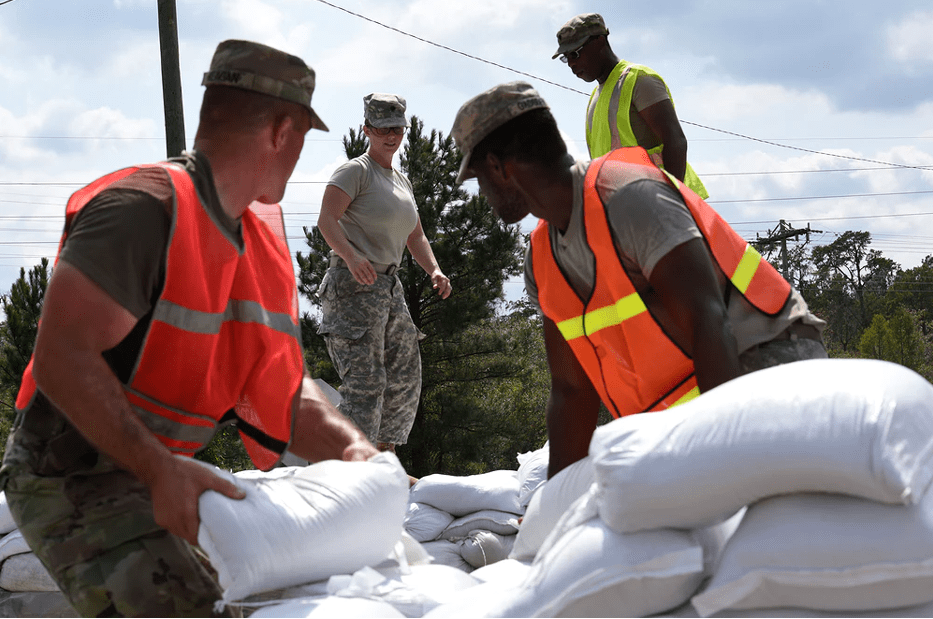We cannot deny how climate change has taken a toll on natural disasters that impact our locality and even the entire world. Whether it is a cyclone or a bushfire, earthquake or flood, proper emergency management should be implemented.
Four emergency management steps are widely used to help lower the effects of natural disasters. However, before we talk about these steps, let’s take a look at the calamities that Australia had to deal with for the past couple of years.
Natural Hazards
Bushfires
In recent years, bushfire has been the second top cause of natural hazards in the southern part of Australia. Bushfires include forest and grassland fires but their most common cause is the eucalyptus plant which has a high oil content.
As vegetation growth for eucalyptus increases during wintertime, the risks of bushfire increase in the summer months. Bushfires typically happen after severe thunderstorms.
The most recent bushfire happened in February 2021 in Wooroloo.
Severe Storms
Severe storms are one of the top reasons for major losses in Australia. This includes hail, windstorms and intense low-pressure systems. The last recorded hailstorm in October 2019 affected the town of Port Macquarie.
Floods
Flashfloods is a natural peril commonly prevalent in Australia. It typically isolates towns while disrupting roads and rail links. Some even cause damage to properties and businesses and losses in agriculture.
Cyclone
Cyclones develop over the warm oceans to the coastlines of Australia. They generally involve heavy rains, catastrophic winds and coastal floods. The latest cyclone that hit Australia happened last April 2021, Severe Tropical Cyclone Seroja.
Aside from these 4 major natural hazards, the country also experiences earthquakes but they rarely happen.
Now that we know the disasters that may happen again, it is best to know and understand how these can be minimised.
4 Emergency Management Steps
1. Prevention
They say that prevention is better than cure. Well, it does not just apply to sicknesses but disasters as well. While there are natural hazards that you can’t avoid, you can help reduce or eliminate their probability of happening.
This is when mitigation comes in. Many organisations and entities take precautionary measures to “mitigate” the effects, risks and consequences of disasters. You may include emergency plans and property inspection as preventive ways against calamities and other hazards.
Preparedness
The second step in emergency management is preparedness which includes emergency training and drills. If you want to be prepared for unexpected disasters or emergencies, you should take the initiative and action for full-scale training and exercises.
It is your responsibility to know what you should do in the event of an emergency. Preparedness requires the ability of every member of the community to increase the level of preventing and responding to disasters.
Response
The response phase typically happens after the disaster has happened. This entails your capability to carry out medical care and emergency rescue to affected individuals and properties. It helps to have undergone first aid training and other emergency response exercise.
While response activities are mainly focused on immediate needs following the emergency, they can also endeavour to lessen collateral or further losses. This also involves addressing the damages and assessing the clean-up activities.
Recovery
The last step is recovery which aims to rebuild what was lost and damaged. This phase may be the longest part of emergency management as it may take somewhere between 6 months to 1 year or even longer.
Recovery partakes all aspects of the affected locality including social, economic and political. It may also involve mental and emotional factors, especially those that have lost their loved ones.
It helps to have prepared strategic plans and protocols to lessen the impact of the disaster while ensuring that financial and structural damages are refurbished. During this step, the assessed damages can help create new contingency plans to reduce risks of losses in case of future disasters.

Why is emergency management important?
Emergency management is an important socio-economic aspect to ensure that communities reduce the vulnerability to hazards. This also helps every member of the community to recover and cope with the after-effects of disasters.
Emergency management relies on these 8 basic principles:
1. Comprehensive
Emergency management should consider all hazards that may befall the community. It should include the phases and relevant impacts of these disasters on people and properties.
2. Progressive
A previous disaster should be a gauge on how emergency managers can improve and carry out better preventive and preparatory protocols
3. Risk-Driven
Every emergency may call for risks and the emergency management team has to ensure that priorities and resources are addressed accordingly.
4. Integrated
They say that where there is unity there is victory. Unity of efforts should be applied within emergency management to ensure that goals are realised.
5. Collaborative
In line with integration, emergency managers should create and sustain a good and sincere relationship among the members, organisations and the government.
6. Coordinated
Emergency management should consider a well-synchronised protocol and activity that can help achieve a common purpose.
7. Flexible
When a situation calls for creative and innovative approaches to solving a problem, the emergency manager should see to it that this is implemented.
8. Professional
Professionalism involves ethical practice, public stewardship, continuous education and training to ensure that your emergency management team can provide deliverables.
Every emergency management team aims to promote safer and less vulnerable communities with the ability to cope with hazards and disasters.
Learn more about how you can deal with disasters and hazards effectively… Call Workplace Emergency Management today!
Also Read: NorStrat

